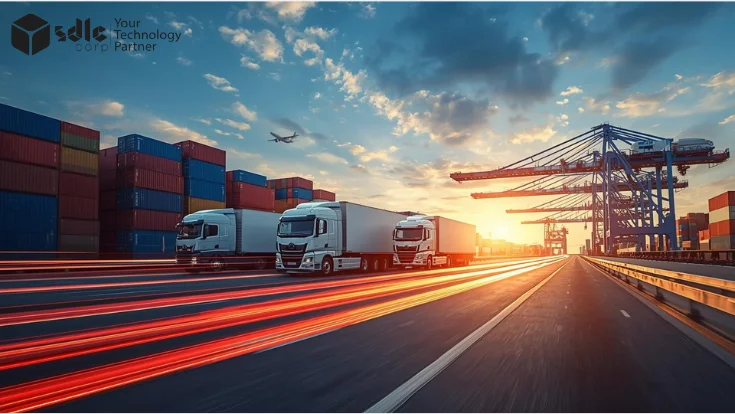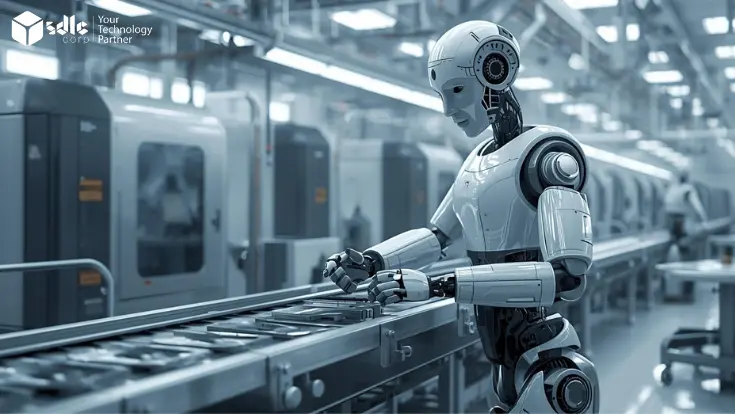As blockchain technology evolves, the demand for more scalable and efficient networks grows exponentially. Layer-2 solutions have emerged as a critical component in addressing these challenges, especially solana blockchain devlopment company within the decentralized finance (DeFi) ecosystem. From reducing transaction costs to increasing throughput, Layer-2 innovations are setting the stage for the next wave of blockchain adoption. In this blog, we’ll explore the future of Layer-2 solutions, focusing on key trends and innovations to watch. We’ll also discuss how these advancements intersect with various DeFi applications, such as the best DeFi wallet, DeFi staking platform development, and top DeFi lending platforms.
Understanding Layer-2 Solutions
Before delving into future trends, it’s important to understand what Layer-2 solutions are and why they matter. Layer-2 refers to secondary frameworks or protocols built on top of an existing blockchain to enhance scalability and performance. These solutions offload transactions from the main blockchain (Layer-1) to a secondary layer, reducing congestion and lowering transaction fees. This is especially crucial for blockchain networks like Ethereum, where high gas fees have been a significant concern.
As Layer-2 solutions continue to evolve, hiring skilled blockchain development professionals becomes essential. These experts can help implement and integrate Layer-2 technologies effectively, ensuring optimal performance and cost-efficiency. Whether you’re a business looking to leverage Layer-2 solutions or a developer seeking to build advanced applications, engaging with a blockchain development company can provide the expertise needed to navigate and utilize these innovations.

Key Trends in Layer-2 Solutions
1.Rollups: The Leading Contender
Rollups have emerged as one of the most promising Layer-2 scaling solutions. They bundle multiple transactions into one transaction and then process them on the main chain. There are two types of rollups: Optimistic Rollups and ZK-Rollups (Zero-Knowledge Rollups).
- Optimistic Rollups assume all transactions are valid and only run computations if a challenge exists. This makes them highly efficient but introduces a delay in transaction finality.
- ZK-Rollups use zero-knowledge proofs to validate transactions, offering faster finality and higher security but at the cost of more complex computations.
Both types of rollups are gaining traction and are expected to play a significant role in the future of Layer-2 solutions. Their integration with the best DeFi wallets and DeFi staking platforms will enhance the user experience by reducing transaction costs and delays.
2.Plasma Chains: Enhanced Security and Efficiency
Plasma chains are another Layer-2 scaling solution that aims to increase transaction throughput without compromising security. Plasma chains operate as child chains attached to the main Ethereum blockchain. They allow thousands of transactions to be processed off-chain before settling them on the main chain.
This technology particularly benefits DeFi wallet development companies looking to create scalable and secure solutions for their clients. Plasma chains could also be a game-changer for top DeFi lending platforms, offering faster and cheaper transaction processing while maintaining the security and decentralization of the main chain.
3.State Channels: Real-Time Transaction Processing
State channels enable real-time transaction processing between parties by allowing them to transact off-chain. Only the final state is broadcasted to the blockchain, reducing the load on the main network and enabling near-instant transactions.
State channels are ideal for applications that require high-frequency transactions, such as DeFi staking platforms and DeFi wallets. As the technology matures, we expect to see more integration with various DeFi business models, offering users faster and cheaper alternatives to current Layer-1 solutions.
4.Sidechains: Customization and Flexibility
Sidechains are independent blockchains that run parallel to the main chain. They are connected to the main blockchain via a two-way peg, allowing for the transfer of assets between the two chains. Sidechains offer customization and flexibility, making them suitable for specific use cases.
For instance, Solana NFT marketplace development could benefit from a sidechain tailored for high-throughput, low-latency transactions, enhancing the user experience. Similarly, Solana blockchain development companies could leverage sidechains to build specialized solutions that cater to unique Solana project development services.

Innovations to Watch in Layer-2 Solutions
1.Cross-Layer Interoperability
One of the most exciting developments in Layer-2 technology is cross-layer interoperability. This allows different Layer-2 solutions to communicate and interact with each other, enabling seamless asset transfers and interactions across multiple platforms.
For example, a DeFi wallet could integrate rollups and state channels, allowing users to choose the most efficient transaction method. Cross-layer interoperability will also facilitate the development of more complex DeFi business models, where different Layer-2 solutions are combined to offer a superior user experience.
2.Decentralized Governance
Decentralized governance is becoming increasingly important as Layer-2 solutions evolve. Governance models that allow users to participate in decision-making processes will be crucial in maintaining the decentralization ethos of blockchain technology.
For instance, Layer-2 solutions that offer DeFi staking opportunities could incorporate decentralized governance to allow stalkers to vote on network upgrades or changes. This would enhance user engagement and ensure that the network evolves in a way that benefits the community.
3.Integration with Non-EVM Chains
While most Layer-2 solutions focus on Ethereum, the future will likely see more integration with non-EVM (Ethereum Virtual Machine) chains like Solana and Polkadot. These chains offer unique features that Layer-2 solutions could enhance.
For example, Solana NFT marketplaces could integrate Layer-2 solutions to offer faster and cheaper transactions, making the platform more attractive to users. Similarly, Solana metaverse projects could leverage Layer-2 technology to handle the high volume of transactions required in virtual worlds.
The Impact on DeFi and Blockchain Adoption
1.Reducing Barriers to Entry
Layer-2 solutions are set to lower the barriers to entry for new users and developers in the DeFi space. By reducing transaction costs and boosting scalability, these solutions make it easier for users to engage in DeFi activities like staking and lending.
For developers, Layer-2 solutions provide a cost-effective way to build and deploy applications. This is particularly beneficial for startups and small businesses entering the DeFi wallet development or top DeFi lending platforms markets. As Layer-2 solutions become more accessible, blockchain development company will play a crucial role in driving innovation and adoption across the DeFi ecosystem.
2.Enhancing Security and Privacy
Security and privacy are two of the most significant concerns in the blockchain space. Layer-2 solutions are helping to address these issues by offering more secure and private transaction methods. For instance, ZK-Rollups provide enhanced security through zero-knowledge proofs, ensuring that transactions are validated without revealing sensitive information.
Moreover, state channels and sidechains can offer more private transaction environments where only the final state is recorded on the main blockchain. This could be particularly beneficial for defi staking platforms and defi wallets requiring higher privacy and security.
3.Enabling New Business Models
The scalability and efficiency provided by Layer-2 solutions are opening the door to new business models in the blockchain space. For example, DeFi business models that rely on high-frequency transactions, such as micro-lending or real-time trading, are now more feasible with the advent of Layer-2 technology.
Moreover, Layer-2 solutions could enable the development of more complex and customizable defistaking platforms that cater to different types of users, from retail investors to institutional clients. As these business models evolve, they will drive further adoption of blockchain technology across various industries.

Conclusion
The future of Layer-2 solutions is bright, with innovations like rollups, plasma chains, state channels, and sidechains set to tackle blockchain scalability and efficiency challenges. These advancements are crucial for the growth of decentralized finance (DeFi), enabling more users and developers to engage with DeFi applications.
Layer-2 solutions will also impact other areas such as Solana NFT marketplaces and the Solana metaverse. For developers and businesses, integrating DeFi blockchain development with Layer-2 solutions is key to staying ahead. Early adoption of these technologies offers a competitive edge, paving the way for a more scalable, efficient, and secure blockchain ecosystem.
Now is the time to explore Layer-2 solutions and DeFi blockchain development to position yourself at the forefront of blockchain innovation.




